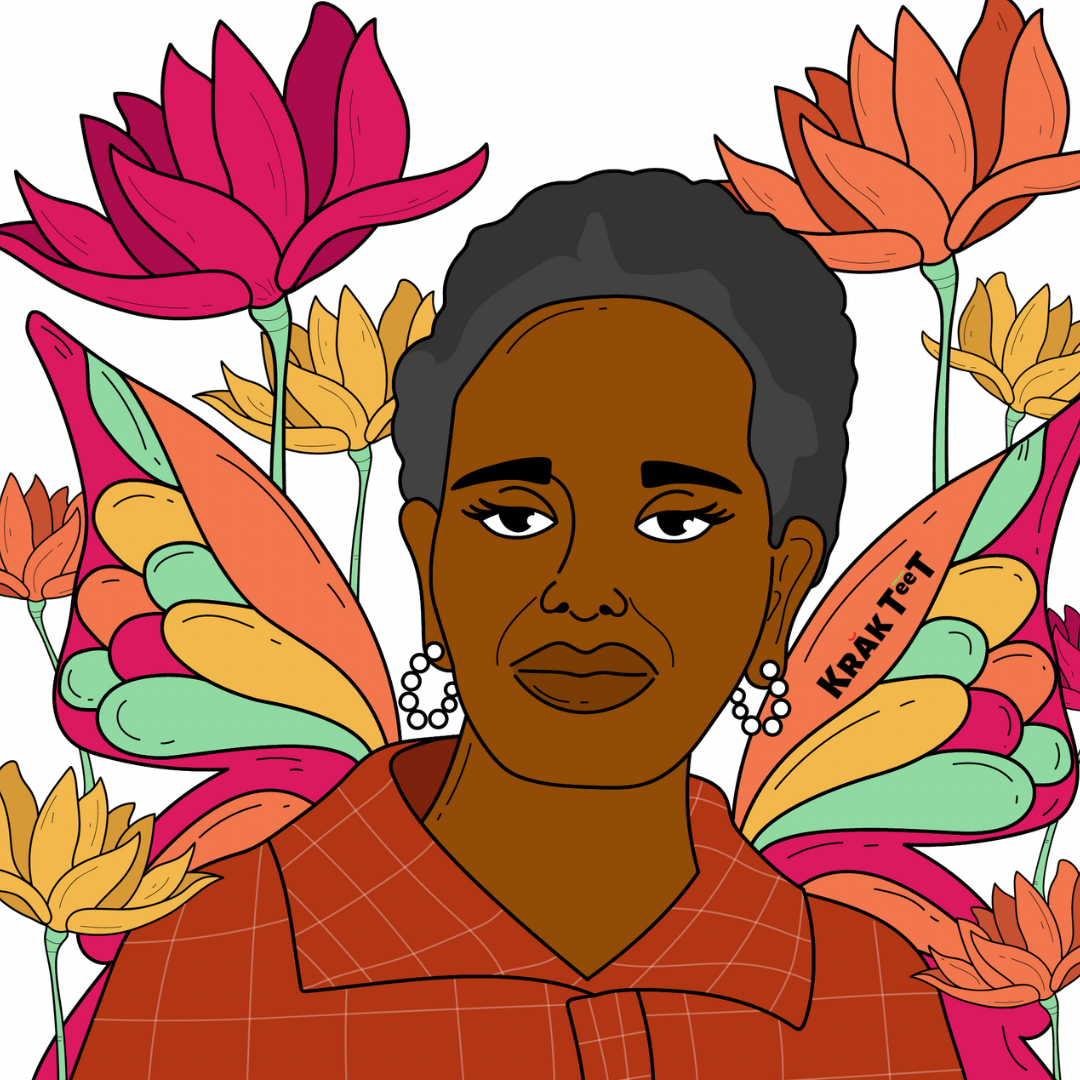Vera Mae Green: A Black Woman, Black Belt, Quaker, and Anthropologist

That whole Bohemian style—Vera Mae Green was already on it. It’s trendy now, but some folks are naturally drawn to “eclectic” patterns and colors. Fabrics that make us feel free. Jewelry that comes with a story. And our homes mirror that too in its paint, rugs, furniture, and art. We love traveling (overseas, especially), trying different spices in our foods, listening to all kindsa music, and identifying more as spiritual than religious. All of this was true about Vera, except she was a…Quaker.
Vera Mae Green was an anthropologist and an ethnographer (I am too, as was Zora and Katherine Dunham). If you sort through a lot of our childhoods, you can spot our path to doing this kind of work. Vera’s friends said they didn’t like watching movies with her as a kid, because she’d ruin it by criticizing, for example, how Hollywood portrayed Native Americans on TV compared to what she knew to be true.
She was born and raised in Chicago on September 6, 1928. That’s the same year my grandmother was born, a year before the stock market crashed and the Great Depression started. If life got rough for white folk, then you know it came down on black folk. College was her way out the hood. After she graduated high school in 1946, she went to William Penn College in Iowa on scholarship. Iowa is 90% white in 2021, so it was probably 99% white back then. This was a Quaker-funded school, so that’s how she got into it.
What I thought I knew and what I learned about Quakers
My stepdad was from Kentucky, and visiting his hometown was my first time seeing the Amish. They rode horses, the men had really long beards, the women had really long hair, and they dressed like it was the 1800s. Pair that memory with the image of the man on the Quaker oatmeal/grit container, and I thought all Quakers were Amish.
Then I learned that Sasha and Melia Obama graduated from Sidwell Friends School, a Quaker school. That’s when I learned that Quakers are more open and progressive than I thought. I liked that Quakers call themselves “friends,” since many of ’em were ride-or-die allies for enslaved black folk.
Vera Mae’s writing about why more black folk ain’t Quakers taught me that Quakers’ relationship with God is a lot like mine:
- Their names for the divine include God, the Light Within, Christ, Spirit, Seed, and Inward Teacher.
- They have Christian roots, but they draw on Buddhism, Judaism, Islam, Hinduism, and nature religions.
- Their “word” is written in their hearts, rather than as words on paper. So it evolves.
- Regarding heaven or hell, their response is: “The emphasis of a Quaker’s life is on present time―on experiencing and following the leadings of the Light in our lives today.”
- They read the Bible for inspiration/guidance but don’t consider it the final authority or the only source.
- They worship together in silence…unless you feel compelled to speak.
- Anyone can attend a meeting; you just have to dress comfortably.
- Ain’t no pastor. Everyone is a minister.
Vera concluded that Quakerism ain’t popular with Black folk because many don’t know about Quakerism and because Quakers believe in nonviolence.
Too broke for grad school, but Spirit be knowing
After leaving Iowa, she went to Roosevelt College back home in Chicago. I wonder if she went back home because she was broke. Because when one of her mentors suggested that she go to grad school, she couldn’t afford to. She became a social worker instead to pay bills and save for grad school. Working the welfare department gave her SO MUCH insight!
Lemme back up a bit. Sociology studies groups/movements. Anthropology focuses more on individuals. What better way to study individual black folk than to sit across from ’em in the welfare office? You see how much they make, what they need, what they’re complaining about, etc. This valuable information ended up directing her life path.
Working for the system, she realized that black folk were being categorized in mainly two different ways: as poor or as rural/country. That categorization affects how we’re treated in the courts, in the medical system, in education, on the job, etc.
She wanted to set the record straight
She got her money up, moved to New York, and graduated from Columbia with a degree in anthropology. Applied for her doctorate there too but got denied.
While in New York, she studied the poor and realized that poverty is an international problem. Mostly an international problem for non-white people. She gotta job with the United Nations, which sent her to Mexico to work with the mestizo community (mestizo = people mixed with Indigenous and European blood). Then she became a research assistant for a well-known white anthropologist name Oscar Lewis who was studying poverty in Puerto Rico and New York. Having grown up poor, worked in the welfare system, and studied the poor people of New York, she was very well qualified for the job.
Her mentors, Oscar Lewis and Edward Spicer (a Quaker) convinced her to reapply for grad school. This time, she was admitted to the University of Arizona. I think she needed to be denied that first time to travel, work more with the poor, gain mentors, and get passionate.
She argued that “the black population and culture is more diverse than previously studied,” and pointed out 9 cultural areas that needed more research. The Gullah Geechee community was one of the nine.
I saw my old-woman-self in Vera Mae Green
She traveled to Aruba to study the different cultures there. Got her phD. Taught anthropology at various colleges with a goal, too, of getting more black students involved in anthropology. Traveled all over the world. Her research influenced how we study black families today. Also how we study Caribbean culture, interethnic cultures, and how policy/law affects non-white people. Though she died at 53, her life was full af!
Her wardrobe and her home reflected the richness of her life experiences. A. Lynn Bolles wrote in an essay called “African-American Soul Force” about Vera Mae Green, who she knew personally. In the essay, she said: “A Georgia Sea Island basket sat on a lacquered chest from Hong Kong while numerous paintings by Haitian artists overlooked the scene from the walls. A little footstool close by was something Green ‘picked up’ in New Delhi, where she did fieldwork during the early 1950s….Her head would be wrapped in tie-dyed polished cotton from the Ivory Coast, while on her wrists would be bracelets of Navajo turquoise and silver.” She danced during meetings—rhumba, merengue, and the cha-cha—and was a freaking black belt in karate.
I need all of this freedom, culture, and world experience in my life!
She passed January 17, 1982 and was very intentional about who she left her things to. Her furniture and boxes of writing. Everything. We tend to think of the big stuff: the houses, cars, and bank accounts. What about the furniture, photos, books, and the files of thoughts?
I give thanks for Vera Mae Green. Her life, her work, and how deliberate she was about it all. Hopefully someone can get to Tuskegee University soon to digitize some of her collections (the kinda work I did for the Library of Congress).

